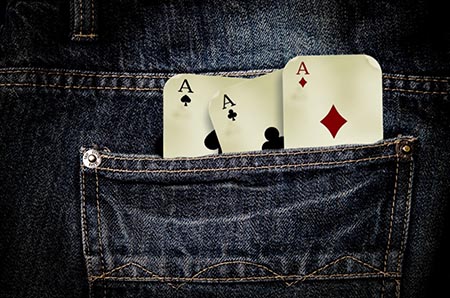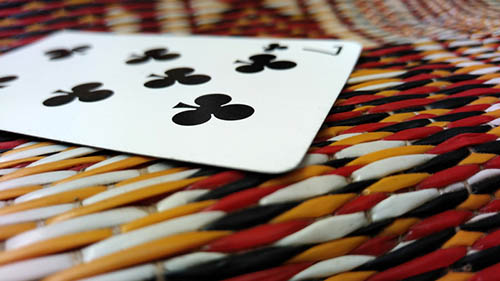
|
| « Articles | History of Playing Cards | Gallery of Playing Cards | Card Games Rules | CONTACT |
How To Play Pocket Pairs In Texas Hold 'em

Just how do you play those pocket pairs?
Photo by by Unknown // CC0 1.0
Texas Hold 'em is a deeply complex game, and each scenario should always be analysed according to certain variables. The same is true when playing pocket pairs. Your exact move will depend on the blind level, your stack size, opponent's stack size, your position, the players in front and behind you, and so on.
In this respect, it's difficult to give a general overview of how to play pocket pairs. This guide should be combined with your existing knowledge to give an overview of how to play them. Always consider every facet of the hand before making your move.
Aces and Kings
These are the hands that every players wants to look down and see. Pocket Aces are the best starting hand in the game, followed by pocket Kings. You are pretty much never folding these pre-flop (there are only a small number of instances where you would fold Kings, usually when facing obscene action on a large bubble or pay jump).
You should also be careful not to play them too slow. Trapping too often with your monsters is a mistake for two reasons. First, you become more predictable. Your big hands should disguise your mediocre raises. Second, you risk being outdrawn on the flop or turn, and lose equity in the hand. Trapping only makes sense in particular situations, such as heads-up against an action junkie when the blinds are high.
It's usually better to raise pre-flop for value. You are happy to play for stacks pre-flop in most situations, though any professional player will tell you with great pain that you are still not guaranteed to win. If you make it to the flop, you usually want to again bet or raise for value, only checking back with Aces when the board is very dry.
Be careful if you sense that you are beaten. Aces and Kings are not invincible hands. Pocket Kings can be thwarted by an Ace high flop, while many noobs struggle to fold pocket rockets on draw-heavy boards when opponents are holding a flush or straight.
Queens, Jacks and Tens
Again, you are rarely folding these hands pre-flop, but you can make more of a case for folding them if the action gets very hot, especially on a tight table. Queens usually warrant stacking off pre against a single opponent, and Jacks and Tens can also be played this way in the right situation. However, you should be cautious if multiple players re-raise.
If you think about it, Tens is a sort of questionable hand to stack pre. You are completely hammered against overpairs, and you are only a little better than coin flipping against A-K, A-Q type hands. Unless you can put underpairs firmly in your opponent's range, Tens isn't looking too good as an all-in hand against several re-raises.
These hands are also not good for trapping. You are easily outdrawn, or the action killed by an Ace or King high flop. As such, raise pre and bet low flops for value, looking to stack off against a lower pair or drawing hand like A-K. Proceed with caution when the board is high, looking to control the size of the pot.
The Rest: 2s - 9s

Pocket 7s down are pretty much set mining hands, unless the blinds are very high relative to stack sizes
Photo by Hassan Khalid
The rest of the pairs, 2s through 9s, cannot really be counted as premium hands, apart from in heads-up scenarios. As mentioned, it all depends on the situation when playing Texas Hold 'em. In any case, 9s and 8s play much better than 2s and 3s, as you are more likely to stack off against an underpair or hit a playable low board.
But for the most part, as in when the blinds are low relative to stacks and when there are multiple players still left in the game, these lower pairs are useful for 'set mining'. This is a tactic in which you aim to get in the pot for cheap in order to hit a hidden hand, three of a kind.
Any pair can be used for this tactic, and in some ways the lower pairs are easier to get away from when you miss. You limp in or call a small raise. If you hit the trips, you're usually all in as soon as possible, hopefully against someone holding a strong pair. If you miss, you throw away your cards if confronted by action.
So there you have it. A simple guide to playing your pocket pairs in Texas Hold 'em poker. Hopefully you can apply this knowledge well and improve your game.
|
|
|
|